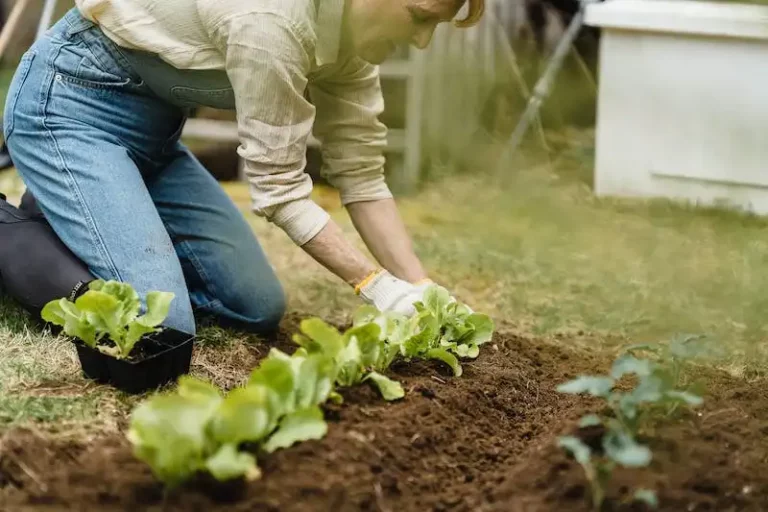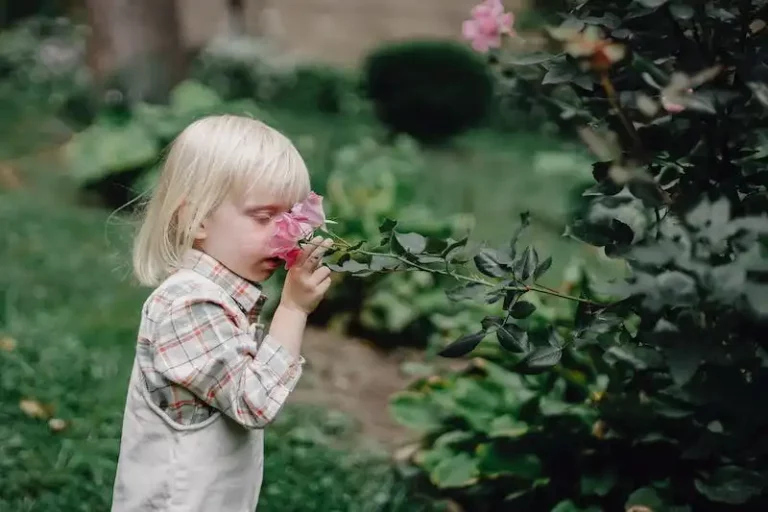If you are a plant lover, then you know that croton plants can add a pop of color and life to any indoor space. But growing and caring for croton plants can be a challenge, especially if you don’t know the signs of trouble to look out for. In this article, we will explore the best ways to ensure your croton plants are thriving and healthy.
One of the first signs that your croton plants may be in trouble is if their leaves start dropping. This can mean that something is not right with the moisture levels in their soil. Croton plants prefer a well-draining soil, so if the soil is too soggy or boggy, the roots can become waterlogged and start to rot. On the other hand, if the soil is too dry, the leaves may start to droop and become dull in color.
Another factor to consider when caring for croton plants is their lighting needs. These plants thrive in bright, indirect light, so if they are not receiving enough light, their growth can be stunted, and their leaves may become pale and lose their vibrant colors. On the other hand, if they are exposed to direct sunlight, their leaves may burn and develop brown spots.
It’s also important to have a routine watering schedule for your croton plants. While they like to be kept evenly moist, they do not like to sit in water. Ideally, you should water your croton plants when the top inch of soil feels dry to the touch. Make sure to soak the soil thoroughly, allowing the excess water to drain out from the bottom of the pot.
In addition to watering, croton plants also benefit from regular fertilization, especially during the growing season. Using a balanced fertilizer once a month can provide the necessary nutrients for healthy growth. However, be careful not to over-fertilize, as this can cause leaf-drop and other issues. Always follow the instructions on the fertilizer packaging.
By keeping an eye out for these telltale signs and providing the necessary care, you can ensure that your croton plants stay healthy and vibrant in your home for months to come. Just remember to take into account their moisture, lighting, and fertilizer needs, and you’ll be able to enjoy the beauty of these plants without experiencing any major problems.
How to Revive A Dying Croton Plant
If your croton plant is looking unhealthy and showing signs of distress, it’s important to take immediate action to try and revive it. Here are some tips on how to bring your dying croton plant back to life:
- Assess the watering routine: Check if you have been consistently watering the plant enough or too much. Croton plants need to be watered thoroughly, allowing the excess water to drain out from the bottom. Overwatering can cause root rot and underwatering can lead to the plant losing moisture.
- Check for signs of damage: Examine the plant’s leaves for any discoloration, browning, or drooping. These are telltale signs that the croton is experiencing trouble.
- Locate the plant in the right environment: Croton plants thrive in a warm and humid environment with bright indirect sunlight. If your plant is placed in a dark corner or near a window with harsh direct sunlight, it may be suffering.
- Remove any dust: Dust can accumulate on the leaves, blocking the plant from receiving sunlight. Wipe the leaves gently with a damp cloth to ensure they can absorb sunlight effectively.
- Adjust the lighting: If your croton plant is receiving too much or too little light, consider moving it to a spot where it can get the right amount of lighting.
- Monitor temperature and humidity: Keep the room temperature consistent and avoid exposing the plant to drastic temperature changes. Also, ensure that the humidity levels are suitable for the plant.
- Repot if necessary: If your croton plant has outgrown its current pot or the roots are filling up the pot, it’s time to transplant it to a bigger container. This will provide more room for the roots to grow and absorb nutrients.
- Inspect the roots: If you suspect root damage, gently remove the plant from its pot and examine the roots. If they are brown, mushy, or have a foul odor, it indicates root rot. Trim off the affected roots and repot the plant in fresh, well-draining soil.
- Provide proper nutrition: Feed your croton plant with a balanced houseplant fertilizer according to the instructions on the packaging. This will help replenish essential nutrients and promote healthier growth.
- Be patient and consistent: Reviving a dying croton plant takes time. It may not recover overnight, so be patient and continue with proper care and maintenance.
By following these tips, you can give your dying croton plant a good chance to heal and become vibrant and attractive once again.
Croton Plant Dropping its Leaves
When your croton plant starts losing its leaves, it can be a cause for concern. The vibrant and colorful foliage is one of the main reasons why people love croton plants, so when the leaves start drooping or changing color, it’s important to take action to ensure its health.
There are several possible reasons why your croton plant may be dropping its leaves. One common reason is that it is not receiving enough light. Croton plants need bright, indirect light to thrive, so if they are placed in a dark or dimly lit area, their leaves may droop and lose their color over time.
On the other hand, if your croton plant is receiving too much intense light, it may also start dropping its leaves. In this case, you can try moving it to a spot with more filtered light or place a sheer curtain to protect it from direct sunlight.
Another factor to consider is the humidity levels. Croton plants are native to tropical regions, so they thrive in high humidity. If the air in your home is too dry, it can cause the leaves to droop and drop off. Using a humidifier or placing a tray with water near the plant can help increase the moisture in the air and keep the plant happy.
It’s important to ensure that your croton plant is getting the right amount of water. Overwatering can lead to root rot and other diseases, which can cause the leaves to drop. On the other hand, under-watering can also cause the leaves to droop and eventually fall off. Watering your croton plant once the top inch of the soil feels dry is a good rule of thumb.
Pests or diseases can also be the culprit behind leaf dropping. Common pests for croton plants include spider mites, mealybugs, and scale insects. Using natural pest control methods or insecticidal soap can help get rid of these pests and revive your plant.
In conclusion, if your croton plant is consistently dropping its leaves, it’s important to determine the cause and take appropriate action. Whether it’s due to a lack of light, incorrect watering, low humidity, or pest infestation, addressing the issue promptly will help your croton plant thrive and bring back its vibrant foliage.
| Takeaways: |
|---|
| – Croton plants may drop their leaves due to insufficient or excessive light |
| – Maintaining the ideal humidity levels is crucial for a healthy croton plant |
| – Proper watering, neither overwatering nor under-watering, is important for leaf health |
| – Pests or diseases can cause leaf dropping, so regular monitoring is recommended |
How to Revive Croton with Drooping Leaves or Losing its Leaves due to Under Watering
If you notice that your croton plant’s leaves are drooping or falling off, it’s a telltale sign that it is not getting enough water. Under-watering can cause significant damage to your plant, but the good news is that you can revive it!
The first thing you need to do is assess where your croton plant is located in your home. Crotons thrive in bright, natural lighting, so make sure they are receiving enough sunlight. If they are placed in a window where they are not getting intense, direct sunlight, consider moving them to a sunnier spot in your home.
Once you’ve addressed the lighting issue, it’s important to know how to properly water your croton. Typically, crotons prefer to be consistently moist but not sitting in water. So, next time you water your plant, make sure to soak the soil thoroughly. The roots of crotons might need a little extra care, so occasionally misting them or placing a small humidifier near the plant can help create a better environment for them to heal.
It’s important to note that crotons are known to naturally lose leaves as they grow, especially during the fall season. So, if your plant is experiencing leaf loss at this time, it may be completely normal. However, if the leaf loss is frequent and happening at the base of the plant, there might be a more serious issue at hand.
In some cases, under-watering can cause the leaves to turn yellow, which is a sign that the plant is not getting enough water. If you see yellow leaves, don’t panic. Here are some tips on how to revive your croton:
- Check the soil moisture by sticking your finger about an inch into the soil. If it feels dry, it’s time to water your plant.
- When watering, make sure to thoroughly soak the soil until water drains out of the bottom of the pot.
- Place your croton in a location with consistent, bright, indirect sunlight.
- Consider increasing the humidity around your croton by misting it or placing a small humidifier nearby.
- Keep an eye on the temperatures in your home. Crotons prefer warmer temperatures, ideally between 60-85°F (15-29°C).
By following these tips, you can revive your croton and make it thrive again. Remember, under-watering can be discouraging, but with the right care, your croton will bounce back and become even more attractive!
How to Revive Croton Dropping Leaves due to Over Watering or Boggy Soil
Overwatering and boggy soil can be common issues that cause croton plants to have drooping or falling leaves. Crotons are tropical plants native to areas with lots of humidity and intense temperatures, so they are not very tolerant of overwatering. If your croton leaves are drooping and the soil feels consistently damp or boggy, overwatering might be the culprit.
One of the first steps to revive your croton plant is to ensure that it is planted in well-draining soil. Crotons need soil that allows water to flow through easily and prevents the roots from sitting in water. If your croton is planted in a pot, make sure it has drainage holes at the bottom. If you notice that the soil is not draining well, you may need to repot the plant into fresh, well-draining potting soil.
In addition to controlling the watering, it is also important to consider the temperature and humidity levels where your croton is located. Crotons thrive in temperatures between 60-85°F (15-29°C) and require a humid environment. If the temperature in your house fluctuates too much or if the air is too dry, it can cause stress to the plant and lead to leaf-drop.
If your croton is receiving direct sunlight near a window, it may be experiencing too much heat and light, which can also result in dropping leaves. Crotons prefer bright indirect light, so it’s best to place them in a spot where they can receive plenty of light without being exposed to direct sunlight. If your croton is currently near a window, consider moving it to a spot where it can still catch some light, but not as intense.
If you suspect overwatering or boggy soil is causing your croton’s leaf-drop, make sure to thoroughly water the plant only when the top inch or so of soil feels dry to the touch. Avoid watering too frequently and allow the plant to dry out between watering sessions. Additionally, consider using a humidifier to increase the humidity levels around the croton.
In summary, to revive croton plants with dropping leaves due to overwatering or boggy soil:
- Check the soil drainage and repot if necessary
- Maintain appropriate temperature and humidity levels
- Place the plant in a location with bright indirect light
- Water the plant thoroughly only when the top inch of soil feels dry
- Consider using a humidifier to increase humidity levels
By addressing these factors, you can help revive your croton plant and prevent further leaf-drop. Of course, if the issue persists or the plant doesn’t show signs of improvement, it might be necessary to consult a plant expert for further guidance.



